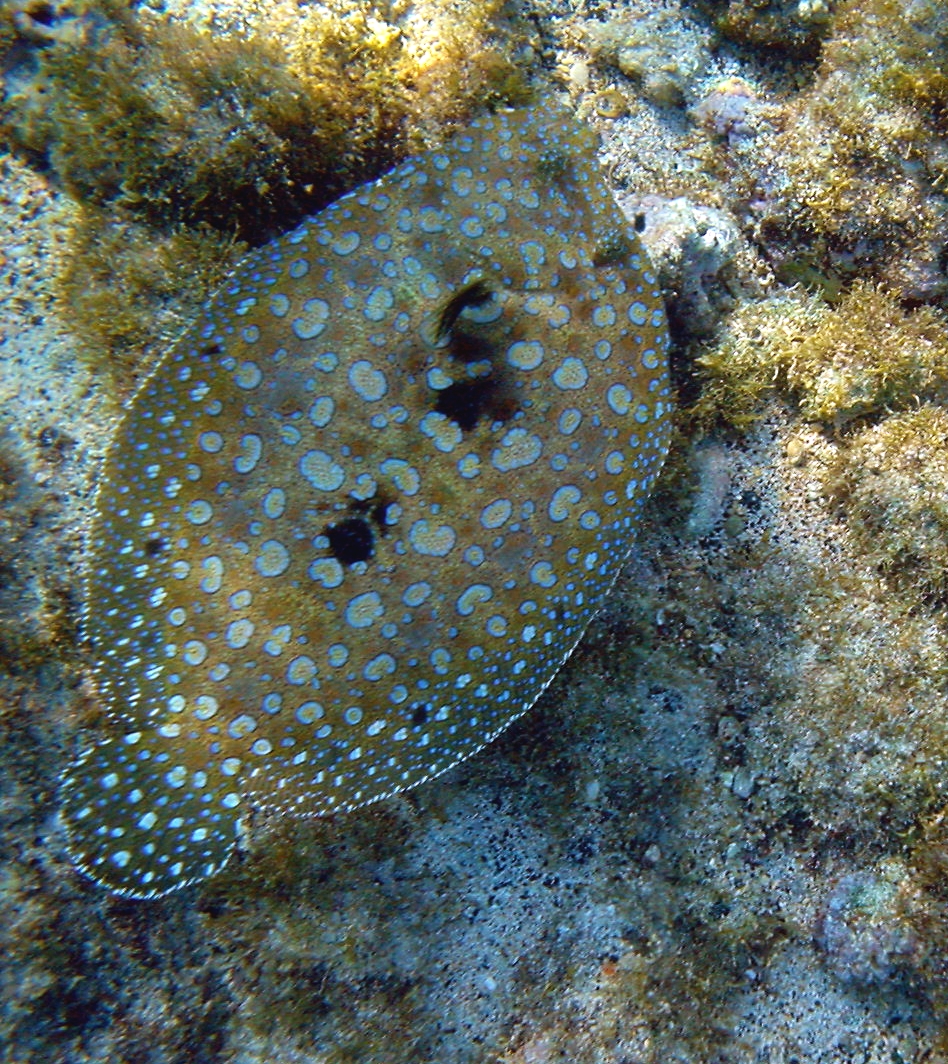underwater video of flounder swimming
Flat as a pancake and oval or rounded in shape, this fish spends much of its time buried to its eyeballs in sand or gravel. When it does move about, fluttering silently across the ocean floor, it can change its coloring and skin pattern to perfectly match its surroundings.
The flowery flounder's base color is pale brown, almost yellow. It has both brownish spots and flowery-looking blue spots reminiscent of a peacock's finery.
The eyes of the mature flowery flounder sit on two protuberances located on the left side of the body above the fish's mouth. The eyes move independently and can look in two different directions at the same time. The eyes of males typically are set further apart than the eyes of females.
The unique left-side placement of the eyes gives this fish a lopsided appearance. The location makes sense, however, considering that due to its habit of lying slightly on its right side buried in sand, the fish would have one eye submerged in grit most of the time if the eyes were evenly placed.
In the manner of all flatfishes, flowery flounders begin life perfectly symmetrical - their eyes evenly placed one on each side of their heads. Early on, they swim upright. While the flounder is still in the larval stage, one of its eyes begins migrating to the opposite side of its head to join the eye there. The fish also starts turning on its side while swimming or burying itself in the sand. Eventually, when the fish is buried, both its eyes protrude to take in the surroundings and watch for prey. Safely hidden from predators, the young flounder can then ambush small unsuspecting fish or crustaceans.
All flatfishes are carnivorous, preying on smaller fish and other ocean creatures such as shrimps and crabs. All have patterned topsides and generally white or light-colored undersides. Some can produce toxins. Many are rated good food fish.


No comments:
Post a Comment